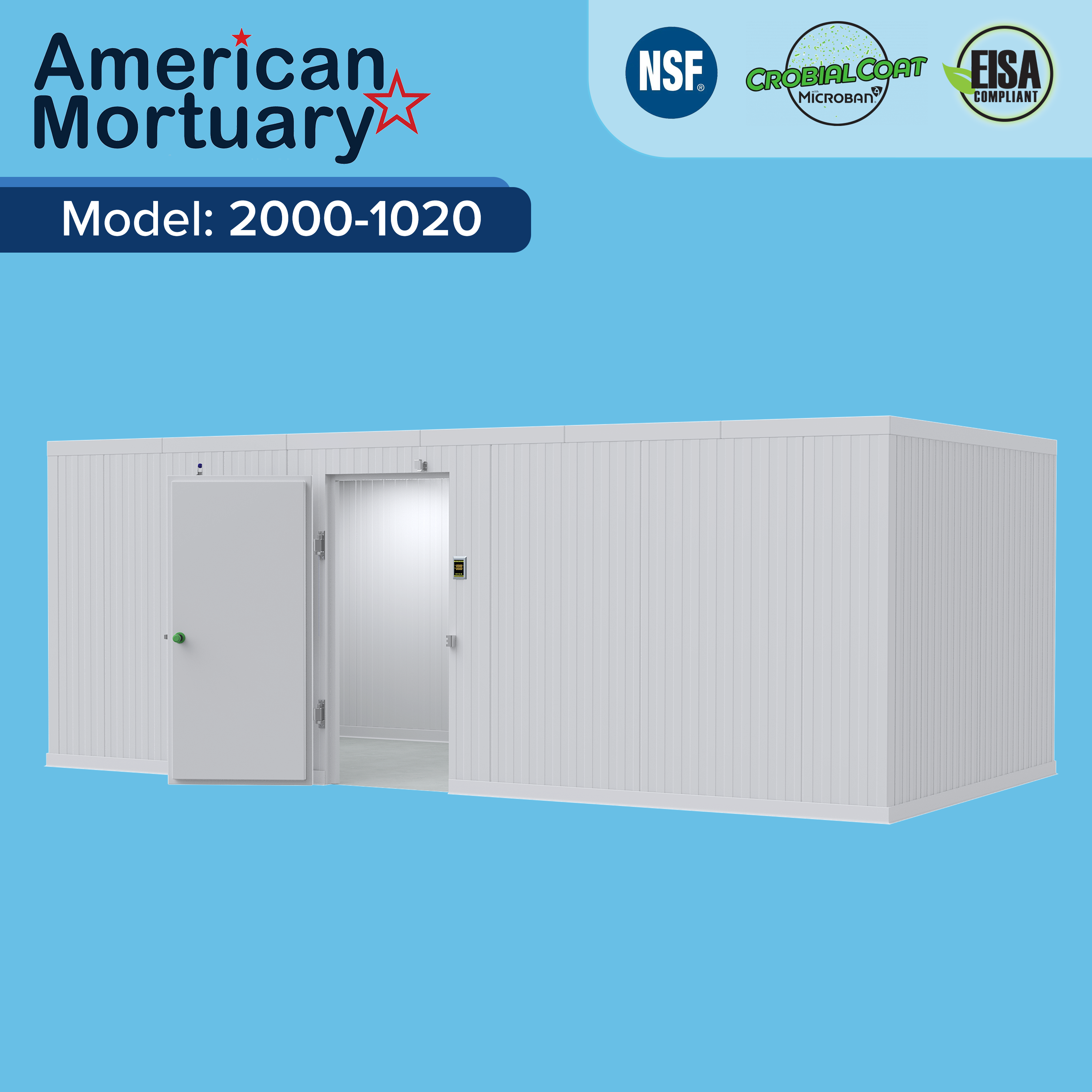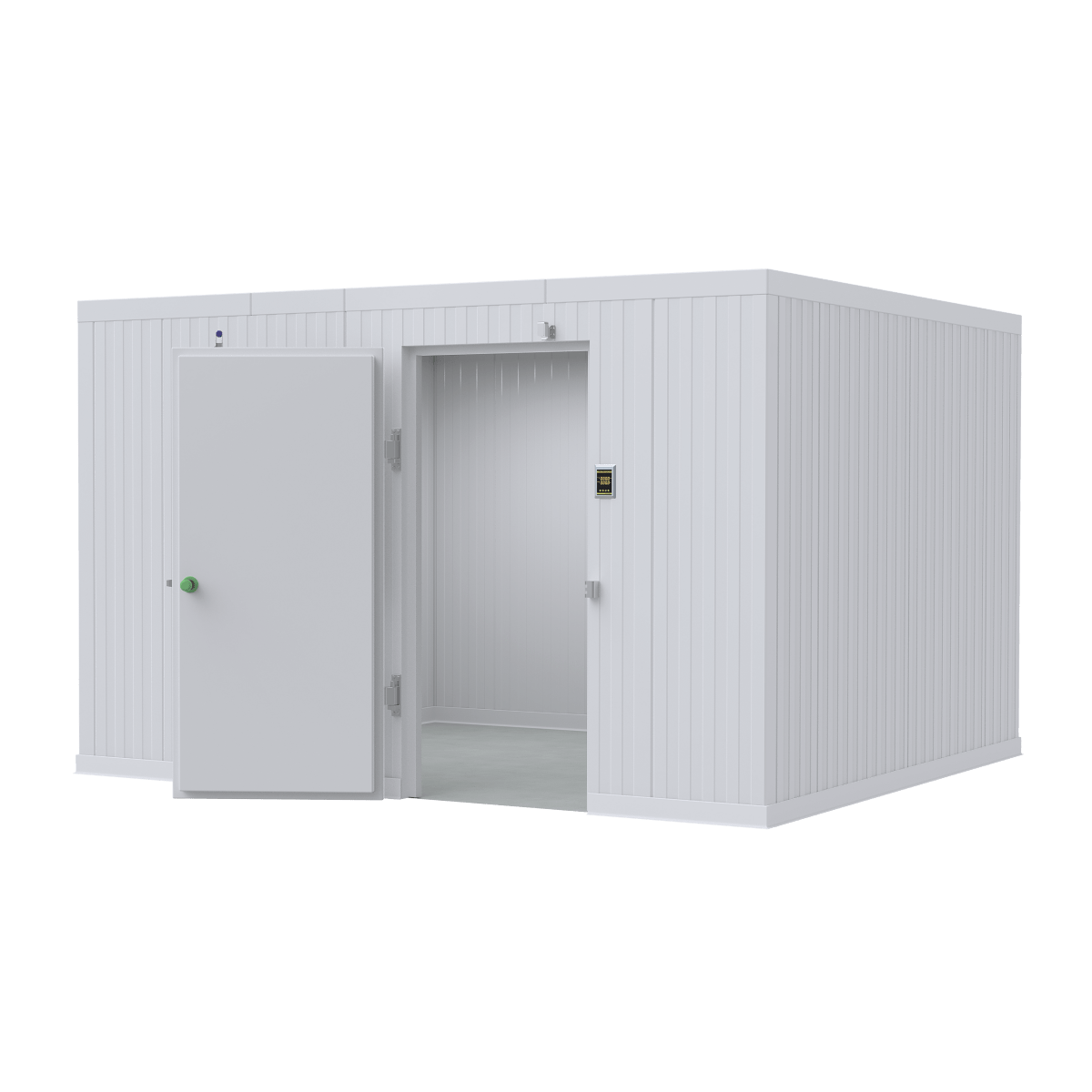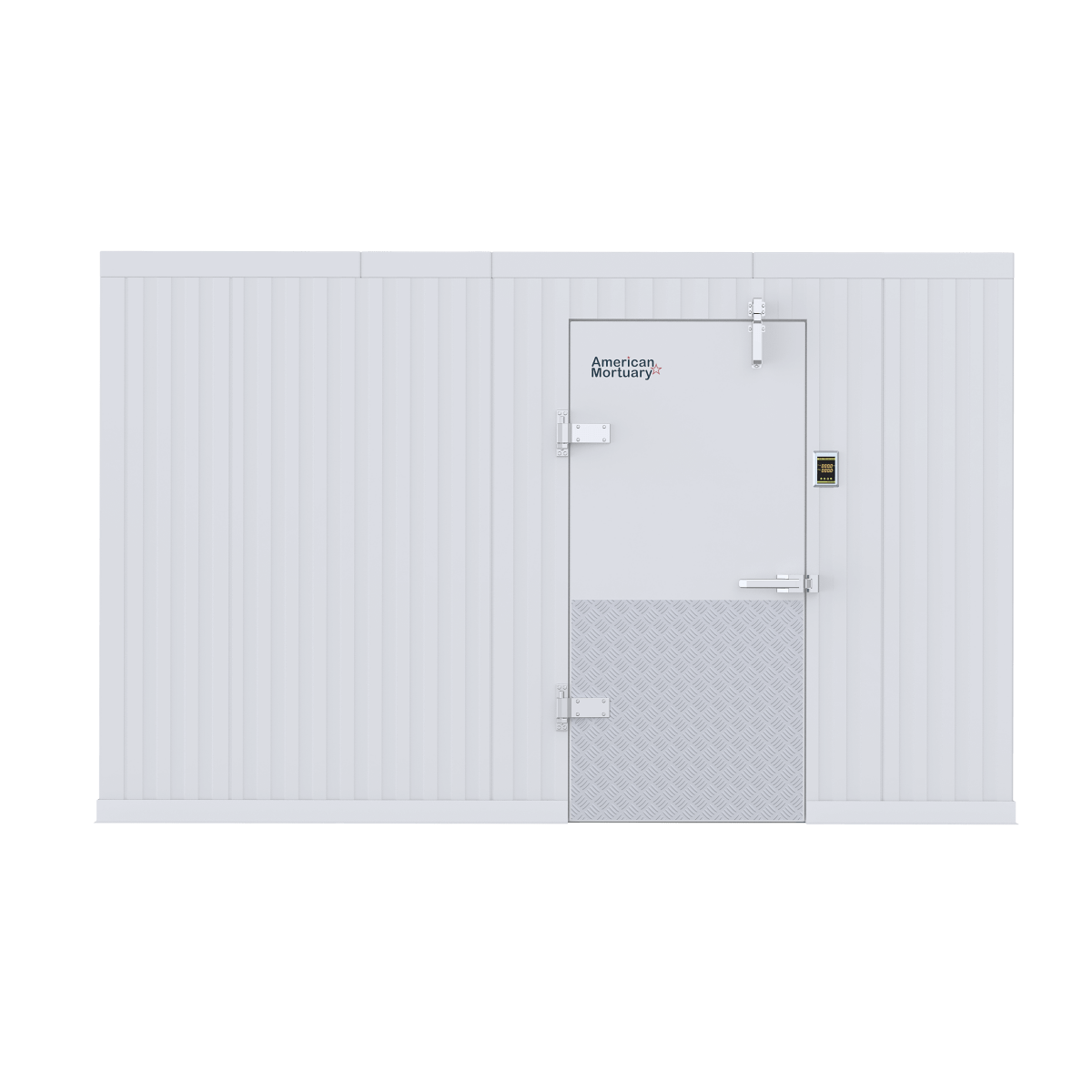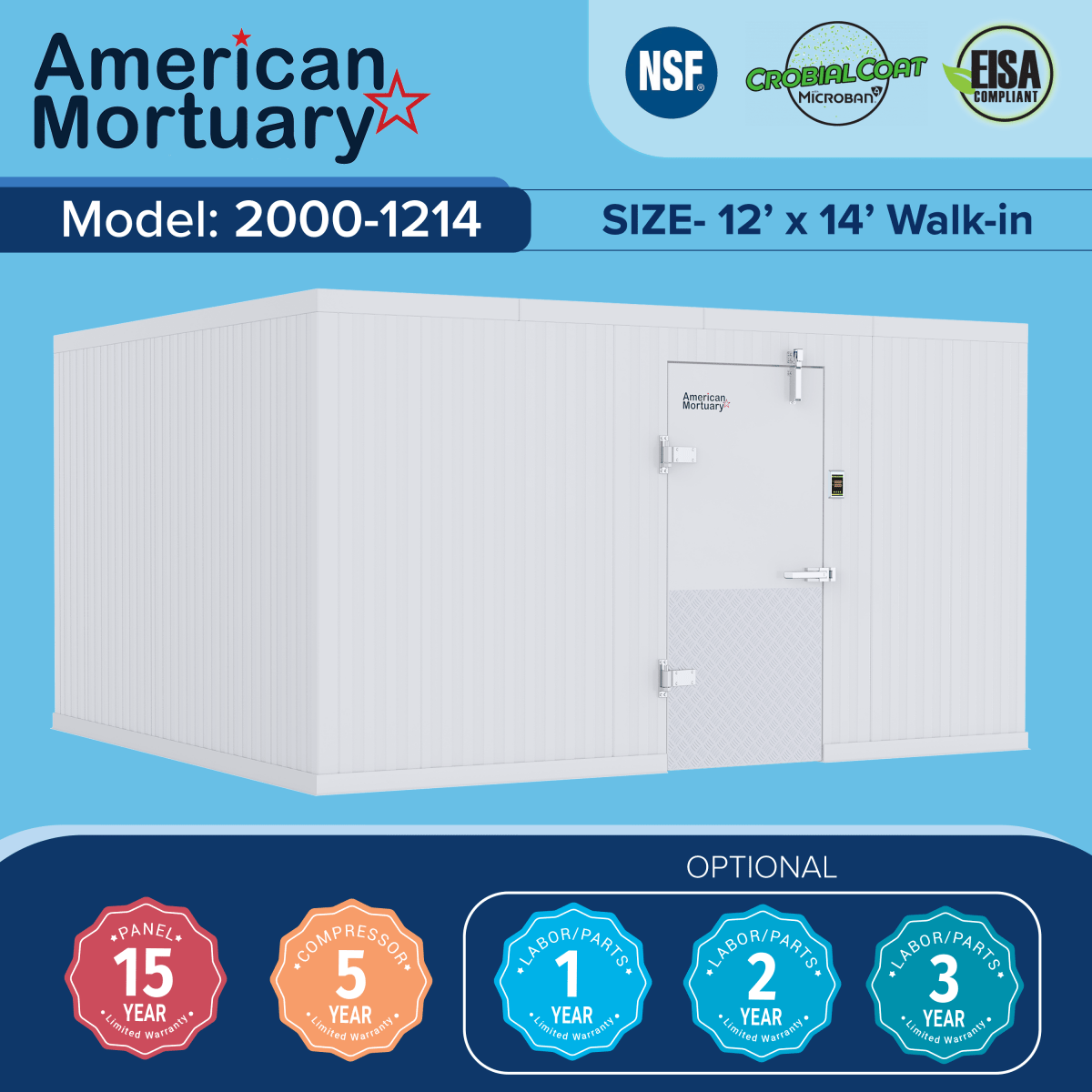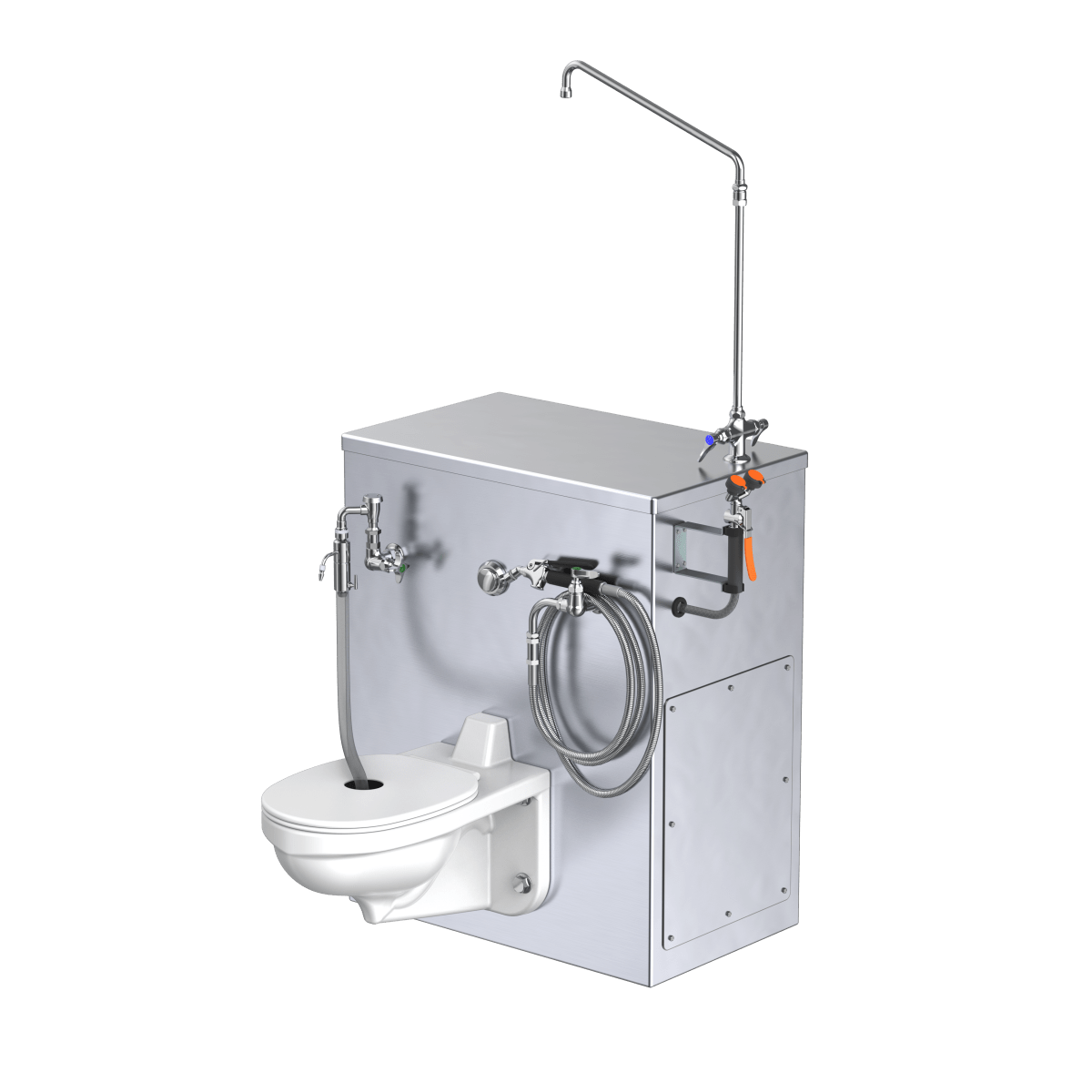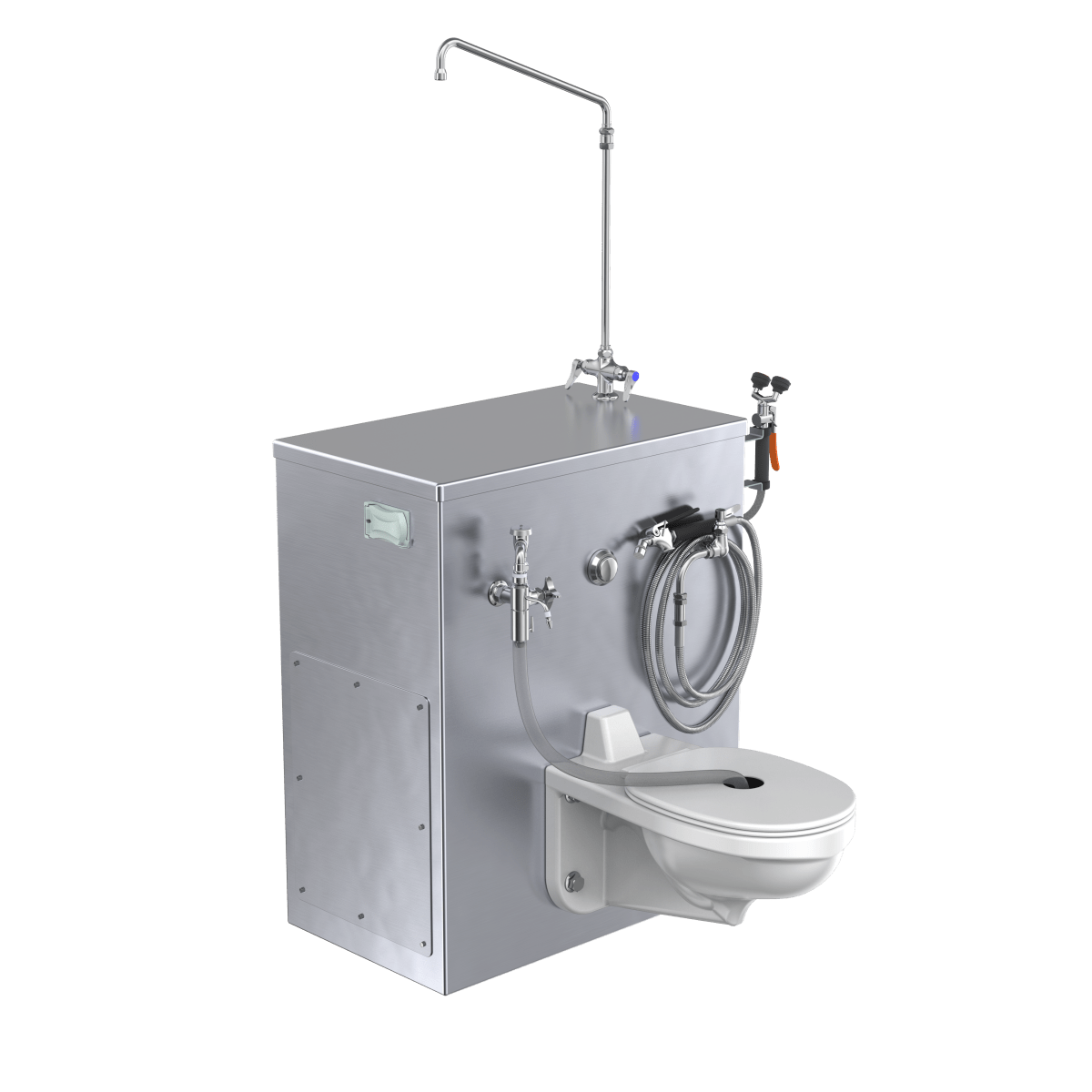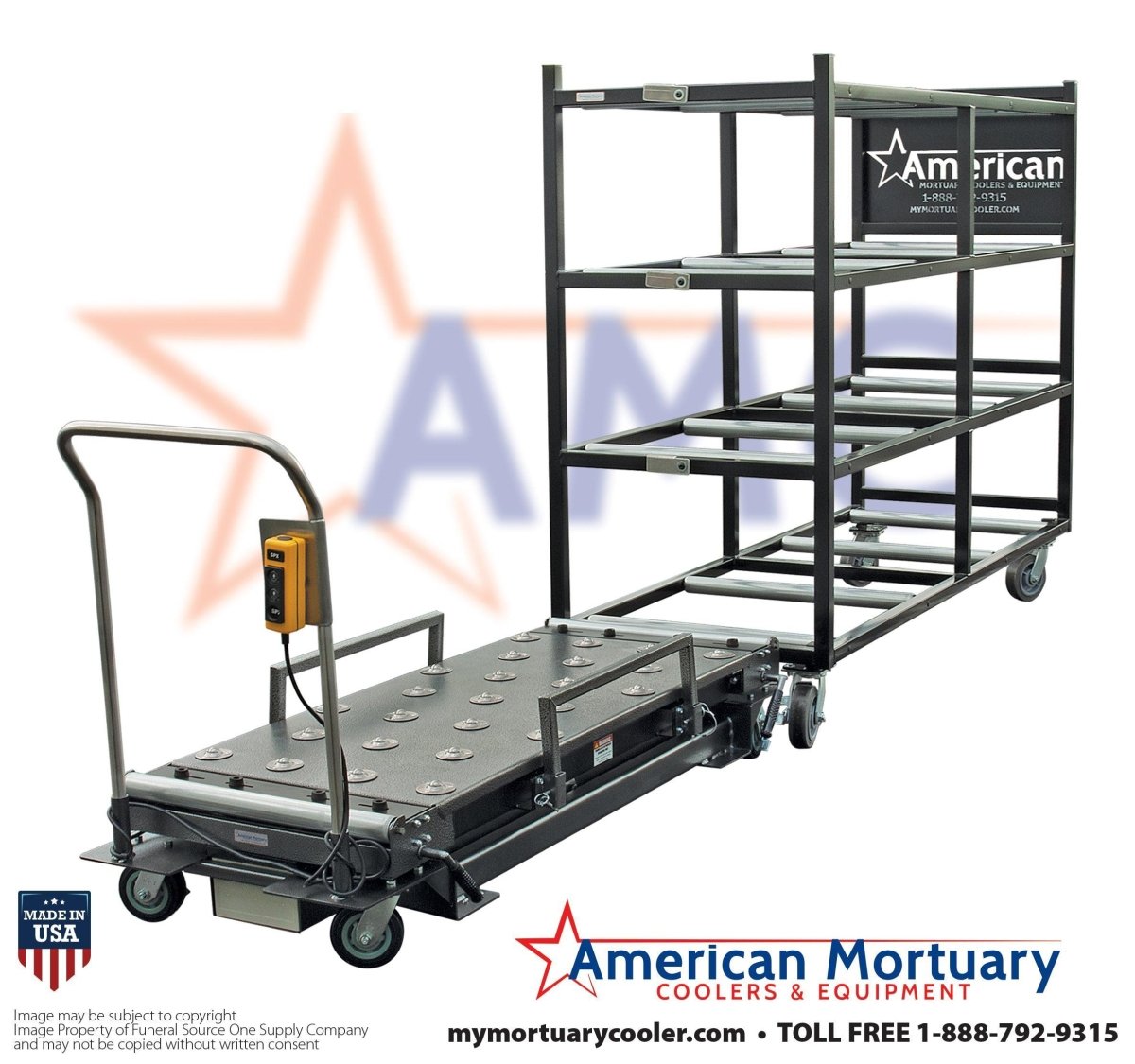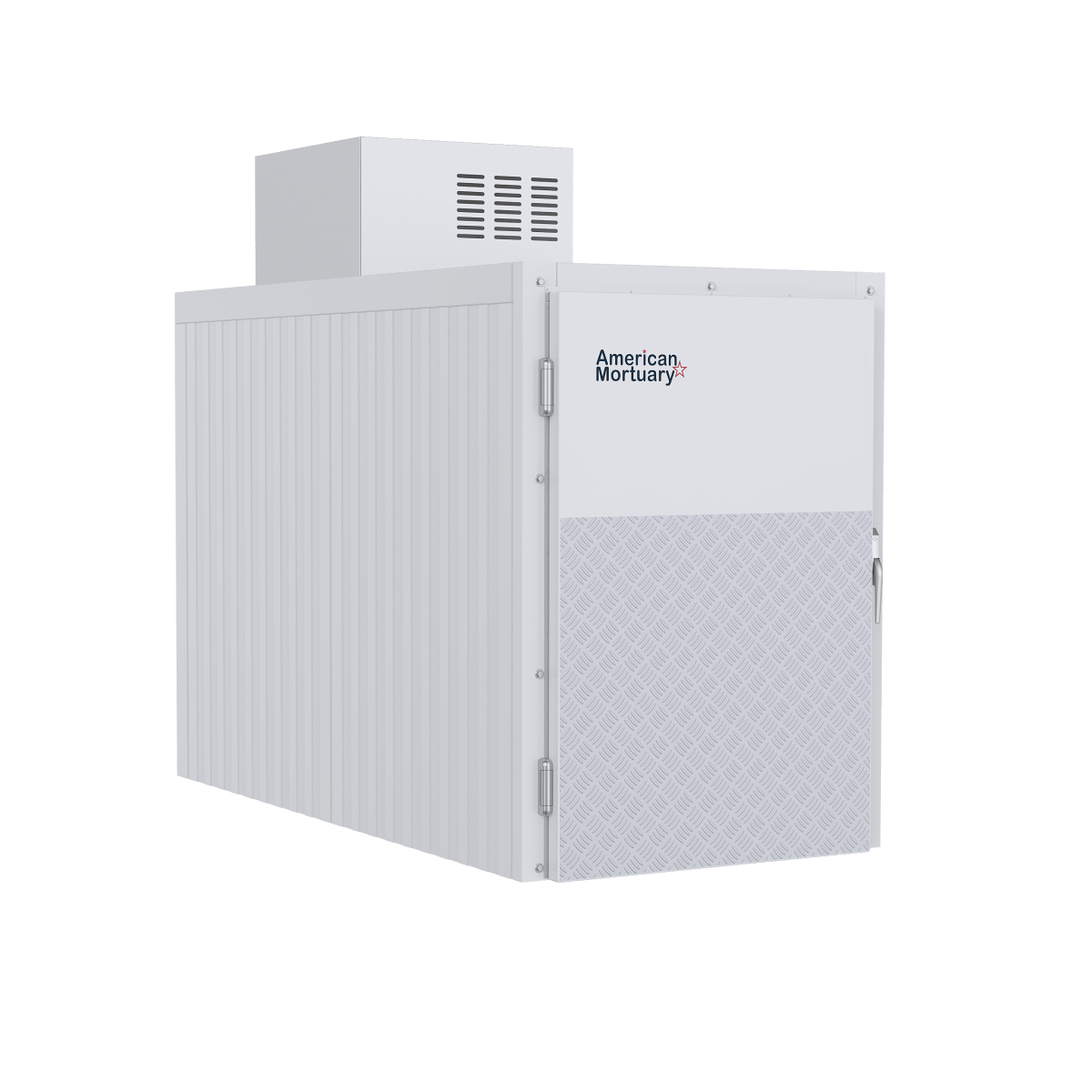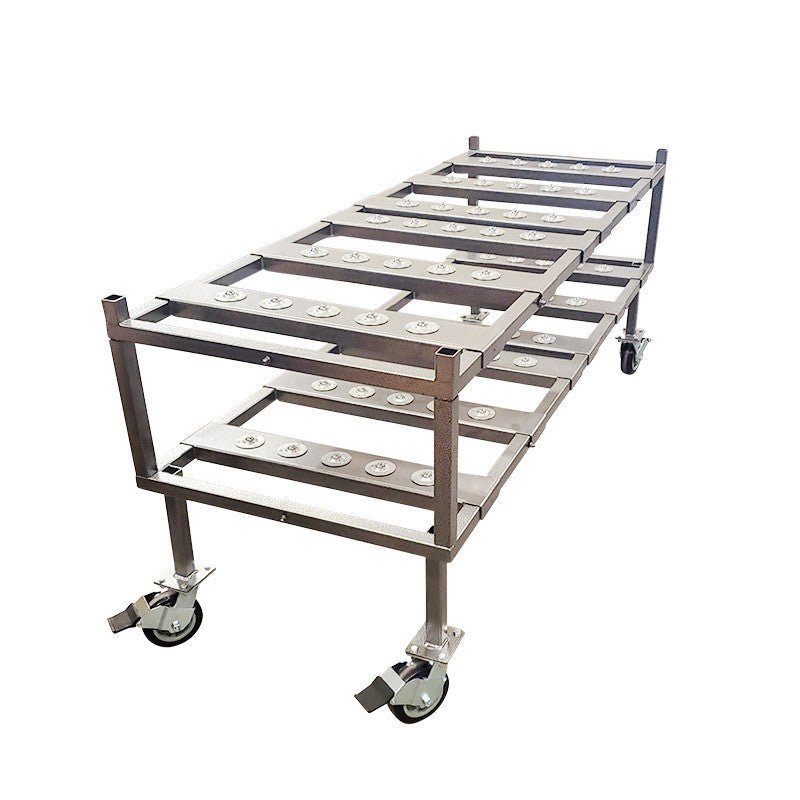Why Mortuary Coolers Are Essential for Professional Funeral Services
A mortuary cooler is a specialized refrigeration unit designed to preserve human remains at temperatures between 36°F and 39°F, slowing decomposition and maintaining dignity during the funeral preparation process. These units serve funeral homes, morgues, hospitals, and crematoriums with reliable, sanitary storage solutions.
Key mortuary cooler types include:
- Walk-in coolers - High-capacity units for larger facilities (6+ bodies)
- Body boxes - Compact standalone units (2-6 body capacity)
- Cabinet-style coolers - Upright or side-loading configurations
- Mobile units - Transportable solutions for emergencies
The global mortuary cooler market is experiencing steady growth, valued at $1.2 billion in 2022 and projected to reach $1.8 billion by 2030. This growth reflects increasing demand for proper body storage and advancements in refrigeration technology.
Mortuary coolers differ from standard commercial refrigeration in several critical ways. They feature heavy-duty stationary rack systems for safe body handling, meet strict NSF sanitation requirements, and provide precise temperature control essential for preservation. Many units are designed to accommodate standard mortuary cots and offer features like telescoping slide rails for easier loading.
Modern mortuary coolers also play a vital role in organ preservation for transplants, where maintaining proper temperature is literally a matter of life and death. Units can be customized with digital temperature displays, emergency alarms, and remote monitoring capabilities.
Whether you're retrofitting an existing facility or planning a new installation, understanding the different types and features available will help you make an informed decision that balances capacity, compliance, and cost-effectiveness.

Understanding the Core Types of Mortuary Coolers
Choosing the right mortuary cooler depends on your facility's specific needs. A small rural funeral home has different requirements than a large metropolitan hospital. At Walk-In Cooler Authority, we offer a comprehensive range of mortuary cooler options to ensure every professional finds their perfect match.

Walk-In Mortuary Coolers
Walk-in mortuary coolers are room-sized refrigerators offering high capacity and easy accessibility, ideal for larger facilities. They allow staff to walk inside to manage remains without the awkward maneuvering of smaller units. We offer custom dimensions to fit any space. A key choice is between floor and floorless designs. Floor models are self-contained and fully insulated, while floorless designs integrate with your existing floor for smoother rolling of equipment. For high-volume facilities, we offer pallet jack compatible floors to move multiple or heavier remains efficiently. Capacity ranges from 2-body units to 12+ body configurations with customizable racking.
Body Boxes & Cabinet-Style Coolers
For facilities with limited space or lower volume, body boxes and cabinet-style mortuary coolers are ideal. These standalone units accommodate 2 to 6 bodies. They come in various configurations: Upright models maximize vertical space, while side-load styles suit narrow corridors. Roll-in styles offer maximum convenience, allowing a mortuary cot to be wheeled directly into the unit, eliminating heavy lifting. Most feature self-contained refrigeration systems that plug into a standard outlet, simplifying installation. Optional casters provide mobility to reposition units as needed.
Modular & Expandable Units
Our modular and expandable mortuary cooler units are designed for a world where needs change. These flexible configurations adapt as your facility grows or caseloads fluctuate. They offer temporary or permanent expansion capabilities, providing adaptable solutions for unexpected surges—like local emergencies or seasonal peaks—without major construction. These units are crucial for event support and surge capacity, ensuring you can mobilize equipment rapidly while maintaining professional standards. Modular units deliver the flexibility to always be prepared.
Key Features and Specifications for Your Mortuary Cooler
Investing in a mortuary cooler is a long-term decision. It's not just about keeping things cold; it's about the details that ensure performance, reliability, and ease of use. Modern mortuary coolers incorporate advanced technology and robust materials designed for funeral homes, morgues, and hospitals. Let's review the essential features of a great mortuary cooler.
| Feature | Walk-In Mortuary Coolers | Body Boxes & Cabinet-Style Coolers |
|---|---|---|
| Capacity | High (6-12+ bodies), scalable | Low to medium (2-6 bodies), fixed |
| Footprint | Larger, often custom-built | Compact, standalone |
| Loading Style | Roll-in, side-load, custom doors | Upright, roll-in, side-load |
| Mobility | Generally stationary | Optional casters for mobility |
| Refrigeration | Split or remote systems, sometimes self-contained | Often self-contained ("drop-in" units) |
| Installation | May require HVAC/electrical, on-site assembly | Simple 110V plug-in common, less complex |
| Cost | Higher initial investment, scalable | Lower initial investment, fixed capacity |
| Customization | Extensive (dimensions, doors, floors, shelving) | Limited (shelving, accessories, exterior finishes) |
| Insulation | High R-value panels (FIP, XPS) | High R-value panels (FIP, XPS) |
| Typical Use | Large funeral homes, morgues, hospitals | Smaller facilities, temporary storage, backup |
Capacity and Configuration
The heart of any mortuary cooler decision starts with a simple question: how many bodies do you need to store? We offer units ranging from intimate 2-body configurations to substantial 12-body systems, with custom builds available for even larger requirements.
But capacity isn't just about the numbers – it's about how efficiently you can use that space. The internal configuration can make the difference between a smooth, dignified operation and daily frustration for your staff.
Our mortuary coolers feature three main types of racking systems, each designed for specific operational needs. Telescoping racks are the gold standard for ease of use – they allow trays to slide out smoothly, giving you full access without the physical strain of manually pulling heavy loads. Roller racks take this concept further, using precision rollers to make loading and unloading almost effortless. For facilities prioritizing maximum space utilization, cantilever racks mount to the walls and support significant weight while keeping the floor clear.
Body tray sizes deserve special attention in your planning. Standard trays measure 23 inches wide, which works perfectly for most cases. However, we also offer 27-inch and 30-inch extra-wide trays to accommodate bariatric cases with dignity and respect. Many of our units are specifically designed to work with standard mortuary cots and dressing tables, creating a seamless workflow from preparation to storage.
Temperature Control and Technology
Maintaining the crucial 36°F to 39°F temperature range is vital for preservation. Our mortuary coolers feature digital thermostats for precise temperature management and clear displays. A key feature in modern units is remote monitoring; WiFi-enabled systems allow you to check temperatures, receive alerts, and adjust settings from a smartphone or computer, providing peace of mind. Temperature alarms serve as your safety net, alerting staff immediately to any issues. For specialized applications like forensic work, we can provide sub-freezing options for long-term preservation. Our refrigeration components are from industry leaders like Emerson Climate Technologies, ensuring your unit runs on proven, reliable technology built on decades of refrigeration expertise.

Construction, Materials, and Durability
A mortuary cooler needs to withstand years of daily use while maintaining the highest standards of hygiene and performance. That's why we focus intensively on construction quality and material selection.
The foundation of any quality unit is its insulation system. We use high R-value foamed-in-place panels with options for both Extruded Polystyrene (XPS) and Foamed-in-Place Polyurethane (FIP). Panel thicknesses range from 3 inches to 5-3/8 inches, with corresponding R-values that directly impact temperature stability and energy efficiency. A typical 4-inch cooler panel delivers R-28 insulation value, while freezer panels achieve R-32.
Interior and exterior finishes make a significant difference in both appearance and maintenance. We commonly use 26 GA Acrylume, Stucco Embossed White Galvanized, or Stainless Steel for their durability and professional appearance. Some units feature seamless fiberglass designs that eliminate bacteria and moisture buildup – a crucial advantage for sanitation requirements.
Every piece of hardware is selected for strength and longevity. Chrome-plated hinges and latches, diamond tread kick plates on doors, and heavy-duty components are standard because we know your equipment needs to perform reliably day after day.
We take special pride in offering American-made mortuary coolers. These units often feature Department of Energy Compliance Certified Performance Panel Systems with no wood construction, ensuring both federal compliance and superior build quality. Choosing American-made equipment typically means faster lead times, readily available parts, and the higher standard of craftsmanship you expect.
Energy Efficiency and Environmental Impact
Energy efficiency in mortuary coolers isn't just about reducing utility bills – though those savings add up quickly. It's about responsible operation and long-term cost management.
All our walk-in panels comply with the Federal Energy Independence & Security Act of 2007 (EISA), meeting strict federal standards for energy consumption. Many units also carry Department of Energy (DOE) compliance certification, your assurance of energy-saving design.
The high-density insulated panels we discussed earlier directly contribute to reduced energy consumption by minimizing heat transfer. When your refrigeration system doesn't have to work as hard to maintain temperature, it uses less electricity and lasts longer.
Interior lighting uses vapor-proof LED fixtures that consume significantly less power than traditional bulbs while generating less heat. Combined with energy-saving compressors designed for optimal cooling with minimal energy draw, these features create substantial operational savings.
Magnetic door gaskets might seem like a small detail, but they create the tight seal that prevents cold air from escaping and warm air from entering. This simple feature significantly reduces the workload on your refrigeration system.
By investing in an energy-efficient mortuary cooler, you're not only reducing your facility's environmental impact but also achieving meaningful long-term savings that improve your bottom line year after year.
Navigating Regulations, Installation, and Maintenance
A mortuary cooler must meet strict standards, be installed correctly, and receive regular care. Let's review what you need to know for compliance, proper setup, and long-term reliability.
Essential Regulatory and Sanitation Standards
Regulatory compliance protects your facility and the families you serve. Our mortuary coolers are designed to meet or exceed industry standards. NSF approval is a key checkpoint, ensuring the unit's materials and design meet public health requirements to prevent bacterial growth. UL certification confirms that all electrical components have passed rigorous safety testing, protecting your staff and facility. OSHA compliance is also critical for workplace safety during daily operations. Beyond federal standards, be aware of local health codes, as state or county rules may apply. For example, some states like Texas have specific product compliance requirements. Our units feature easy-to-clean surfaces like seamless fiberglass or stainless steel to help you meet these standards.
Installation and Space Requirements
Getting your mortuary cooler installed correctly from day one saves you headaches down the road. We've learned that proper planning makes all the difference in both performance and longevity.
Site preparation starts with the basics – a level, sturdy surface that can handle the weight of your unit plus its contents. Walk-in units typically need a concrete slab or reinforced flooring, while smaller body boxes are more forgiving. Think of it as building a solid foundation for reliable operation.
Electrical requirements vary significantly based on your chosen unit. Many of our smaller, self-contained body boxes simply plug into a standard 110V outlet – it's almost as easy as plugging in a household appliance. Larger walk-in units or specialized systems might need dedicated 220V circuits or specific HVAC connections. We always provide detailed electrical specifications so your electrician knows exactly what's needed before installation day.
Proper ventilation for the refrigeration unit isn't optional – it's critical. The condensing unit needs adequate airflow to dissipate heat effectively. Poor ventilation leads to overheating, which means inefficient operation, higher energy bills, and equipment that wears out faster than it should.
You'll also need to decide between assembled versus unassembled delivery. Assembled units arrive ready to go but need more space for delivery. Unassembled units can fit through tighter spaces and some models can be set up in about an hour using common tools. For larger units, you might need forklift access for delivery, especially without a loading dock. Just remember to inspect everything immediately upon delivery and note any damage on the delivery paperwork.
Routine Maintenance for a Mortuary Cooler to Ensure Longevity
Regular maintenance ensures your mortuary cooler runs efficiently, extends its lifespan, and prevents costly emergency repairs.
Daily and weekly care is essential. Check the digital temperature display to ensure it's in the proper 36-39°F range. Inspect and clean door gaskets, keep interior surfaces clean with approved disinfectants, and ensure nothing blocks airflow around the coils.
Monthly maintenance includes condenser coil cleaning, which is crucial for efficiency. Gently clean dust and debris from the coils with a brush or vacuum. Check that drain lines are clear and lubricate door hinges and latches.
Professional servicing once or twice a year is money well spent. A certified refrigeration technician can inspect refrigerant levels, electrical connections, and overall system health to catch problems before they become costly breakdowns. When you need service, many manufacturers provide direct support. You can often access warranty lookups and service requests online to get help quickly.
Consistent maintenance isn't just about protecting your investment – it's about ensuring your mortuary cooler provides the reliable preservation that families depend on during their most difficult times.
Frequently Asked Questions about Mortuary Coolers
We get a lot of questions about mortuary coolers, and honestly, that's exactly what we'd expect. Choosing the right refrigeration for your facility is a big decision, and you want to make sure you're getting it right. Here are the questions that come up most often in our conversations with funeral directors, morgue operators, and hospital administrators.
What is the main difference between a mortuary cooler and a standard commercial cooler?
While they might look similar from the outside, a mortuary cooler is built for an entirely different purpose than the walk-in cooler at your local restaurant. The differences run much deeper than you might think.
Temperature precision is absolutely critical in a mortuary cooler. We're talking about maintaining that narrow 36-39°F range consistently, not just getting "close enough." Standard commercial coolers can handle temperature swings that would be completely unacceptable when you're preserving human remains or keeping organs viable for transplant.
The construction and durability tell a different story too. Our mortuary coolers feature heavy-duty racking systems designed specifically for body trays, which can weigh several hundred pounds when loaded. Try putting that kind of weight on a standard cooler shelf, and you'll quickly see the difference. The panels are reinforced, the hardware is built to last, and everything is engineered for the unique demands of mortuary work.
Sanitation standards are where things get really serious. Mortuary coolers must meet NSF approval requirements, with seamless interiors and surfaces that can be thoroughly disinfected. We're not just keeping food fresh here – we're maintaining a sterile environment that meets strict health codes.
And let's talk about those specialized racking systems. Instead of simple shelves, mortuary coolers use telescoping rails, roller systems, or cantilever racks that make loading and unloading body trays safe and efficient. These systems are designed with both dignity and ergonomics in mind.
How do I determine the right size cooler for my facility?
This is probably the most important question you'll answer, and getting it wrong can be costly. We always tell our customers to think beyond just their current needs.
Start with your average case volume – how many bodies do you typically store at once? But don't stop there. Think about your peak periods. Maybe you're usually handling 3-4 cases, but during flu season or after a local emergency, that number could double. You never want to be caught without adequate storage.
Storage duration matters more than most people realize. If bodies typically stay in your care for just a day or two, you need less capacity than a facility where remains might be stored for a week while families make arrangements.
Here's something many facilities overlook: bariatric accommodation. Standard body trays are 23 inches wide, but you need to be prepared for cases requiring 27-inch or 30-inch trays. These wider trays don't just take up more space – they need stronger racking systems too.
Future growth is worth considering, especially if you're a growing funeral home or if your area's population is expanding. A modular system might make sense, or you might want to invest in a slightly larger unit now rather than replace it in five years.
Don't forget to measure your available space carefully. You need room for the unit itself, plus clearance for doors to open, staff to move around safely, and proper ventilation for the refrigeration system.
We offer everything from compact 2-body units perfect for smaller facilities to 12-body walk-ins for high-volume operations. Our team can help you crunch the numbers and find that sweet spot between adequate capacity and smart budgeting.
What are the cost factors for a mortuary cooler?
Let's be honest – a mortuary cooler is a significant investment, and you deserve to understand exactly what drives the cost. The good news is that when you know what affects pricing, you can make informed decisions about where to spend and where to save.
Size and capacity are the biggest factors. A basic 2-body unit might start around $6,000-$8,000, while a multi-door 6-body configuration could run $14,000-$20,000 or more. Walk-in units generally cost more than body boxes because of their scale and often custom construction requirements.
Materials make a difference in both price and longevity. Stainless steel throughout looks great and lasts forever, but it costs more than standard finishes. Thicker insulation with higher R-values keeps temperatures more stable and saves energy, but adds to the upfront cost.
Technology features like digital temperature control, remote monitoring, and specialized telescoping slide rails are incredibly useful, but each one adds to the price tag. Think about which features will actually improve your daily operations versus nice-to-have extras.
Customization always costs more. Standard dimensions and configurations keep prices down, while custom sizes, unique door layouts, or special interior features bump up the investment.
Don't forget about accessories and installation. Optional casters for mobility run about $885, locking handles add around $220, and exterior ramps cost about $575. Installation costs vary widely depending on your facility's electrical setup and whether you need site preparation.
Shipping can be substantial for large units, especially if you're in a remote location. Some units ship assembled, others come knocked down for easier delivery and lower freight costs.
The smart approach is thinking about total cost of ownership. An energy-efficient unit with quality construction might cost more upfront but save money on electricity and repairs over its lifetime. That's the kind of math that makes sense for your bottom line.
Conclusion
Selecting the right mortuary cooler for your facility is one of the most important investments you'll make in your career. It's not just about keeping things cold – it's about honoring the families you serve, protecting public health, and ensuring your team can work efficiently and safely every single day.
Throughout this guide, we've walked through everything from compact 2-body units perfect for smaller funeral homes to expansive walk-in systems that can handle the demands of busy hospitals and morgues. We've explored the technology that keeps temperatures precisely where they need to be, the construction materials that ensure decades of reliable service, and the regulatory requirements that keep everyone safe.
Making the right choice means finding that sweet spot between capacity, features, and budget. Maybe you need a simple body box that plugs into a standard outlet, or perhaps your facility requires a custom walk-in unit with remote monitoring and specialized bariatric accommodation. Either way, the key is understanding your specific needs and choosing a system that can grow with you.
Ensuring dignified care is at the heart of everything we do. When families trust you with their loved ones, they deserve to know that every detail has been carefully considered – from the seamless stainless steel interior that maintains perfect hygiene to the whisper-quiet operation that respects the solemnity of your work.
Operational efficiency matters too. The right mortuary cooler should make your job easier, not harder. Features like telescoping racks, digital temperature controls, and energy-efficient components all contribute to smoother daily operations and lower long-term costs.
At Walk-In Cooler Authority, we understand these challenges because we've been America's trusted authority in mortuary and funeral supplies for years. Our wide range of OSHA-compliant mortuary refrigeration solutions helps professionals like you save money without compromising on quality or safety. Whether you're replacing an aging unit or outfitting a brand-new facility, we're here to help you make the best choice for your unique situation.
Ready to dive deeper into mortuary refrigeration? Explore our complete guide to cadaver refrigeration for even more detailed insights into serving families with the dignity and professionalism they deserve.



